Badan: description, varieties, planting and care
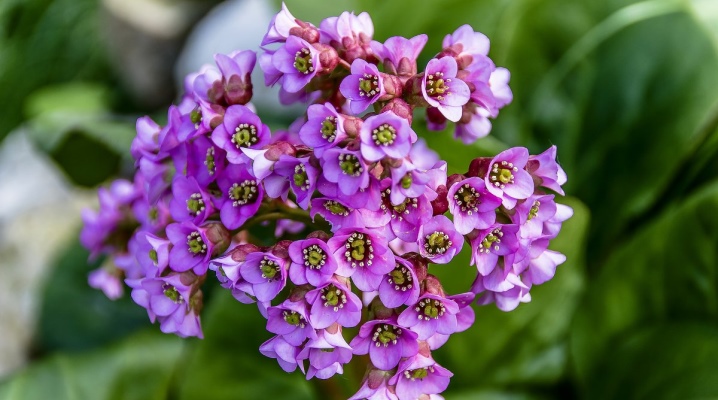
Badan can be a real decoration for any suburban area. This plant has bright pinkish inflorescences, as well as juicy leaves that can change color with the onset of frost. In this material, you will get acquainted with the description of the varieties of badan, as well as with the peculiarities of planting and caring for this garden crop.

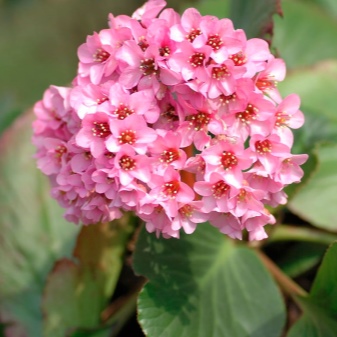
Peculiarities
Badan belongs to the genus of perennial (less often annual) herbaceous plants from the saxifrage family. The culture is characterized by horizontal and massive roots, as well as rounded or oval basal leaves of emerald color. Depending on the varietal culture, the leaf plates of this flower are glossy, leathery, matte or petiolate. Small buds of bergenia are tightly collected in panicle inflorescences of red, pinkish, purple or white shades.
The flowering period of the culture occurs in late spring or early summer. A box with numerous dark seeds - this is what the berry fruit looks like.
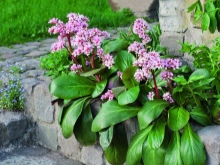
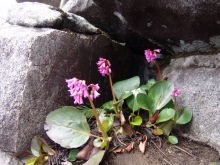
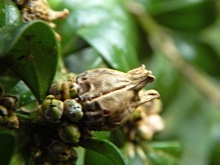
In the wild, badan usually grows in temperate climates and is most often found in the territories of Central Asia. Some varieties of badan grow close to natural reservoirs, while others prefer mountainous terrain with a height of up to 2.5 thousand meters above sea level. Today this horticultural crop is actively cultivated for both decorative and medicinal purposes.
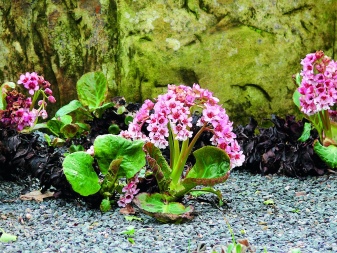
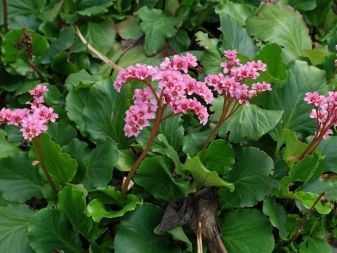
Types and varieties
Badan today is presented in the form of 10 independent varieties and more than 30 varieties, however, about 6 popular species and varieties of badan are actively cultivated in horticulture.
- Thick-leaved. This plant can be found in Altai or Mongolia - there it is presented in the form of an evergreen herbaceous flower with a relatively high height of 60 cm. The plant is characterized by round shiny leaf plates, tightly assembled into a rosette. The inflorescence of thick-leaved bergenia is paniculate and consists of many pinkish bell-shaped flowers. It features an early flowering period (which begins in April) and leafy plates that turn red with the onset of cold.
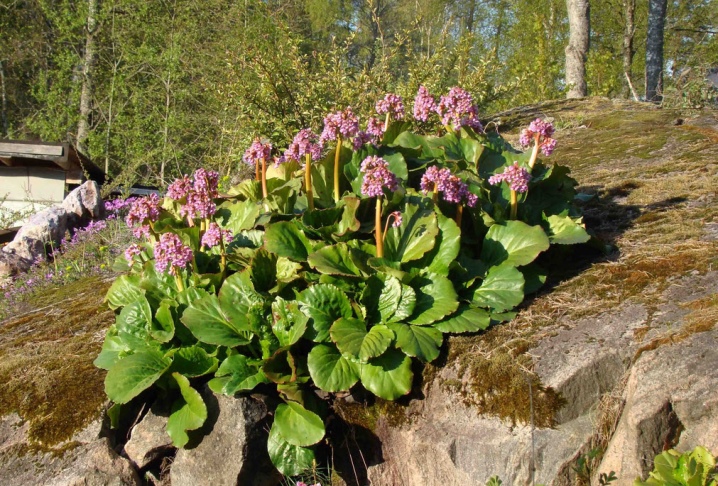
- "Galina Serova"... This is one of the most light-loving varietal varieties - the plant is distinguished by a variegated color of leaf plates, as well as a loyalty to direct sunlight. In autumn, the leaves take on a burgundy or red hue, and the flowering period itself falls at the end of May or June.
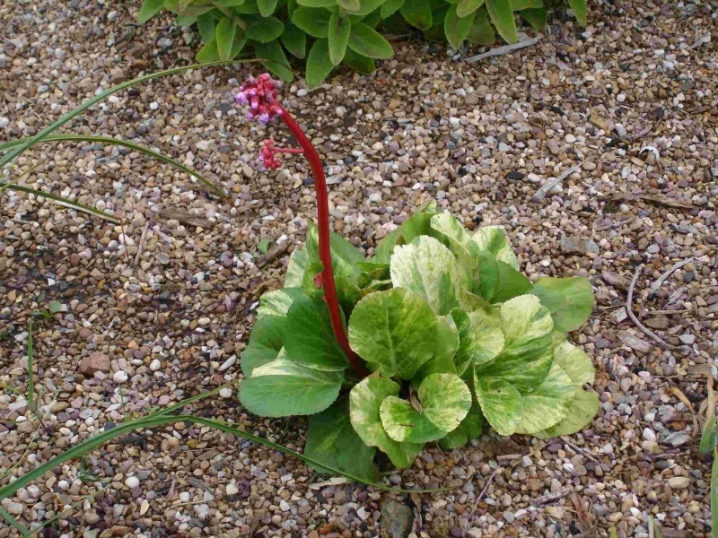
- Pacific... This variety is characterized by massive rhizomes and dense, oval leaves up to 20 cm in diameter. The flower itself is not very tall, but it has lush inflorescences that can stretch up to 40 cm in height. Such a badan blooms in May or early June, paniculate inflorescences are represented by rather large bright pink or lilac flowers. In its natural environment, Pacific berry grows on stone ridges and forms dense thickets.

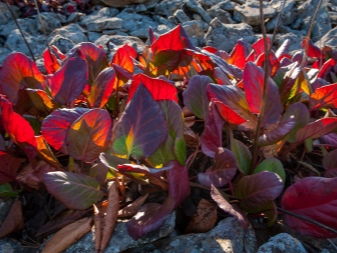
- Ciliated. The homeland of this species is the distant lands of Tibet and the Himalayas, where the plant is located in shaded forests or at great height in the mountains. Unlike other varieties, this badan has extremely rounded toothed leaves and inflorescences of a pastel pink or light shade.
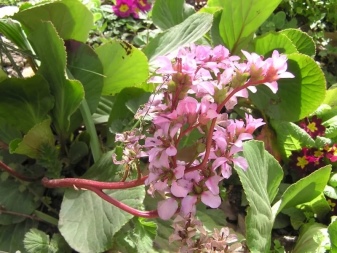
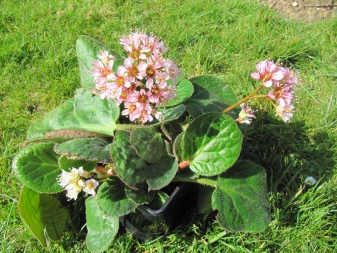
- Badan Schmidt... This species combines all hybrid varieties obtained by crossing the thick-leaved and ciliated varieties. The result of this crossing was the creation of a tall plant with long (up to 25 cm in length) elongated emerald leaves, as well as a serrated edge and fringe in the form of tiny hairs. The buds here are collected in dense panicles and are distinguished by a rich pink color.
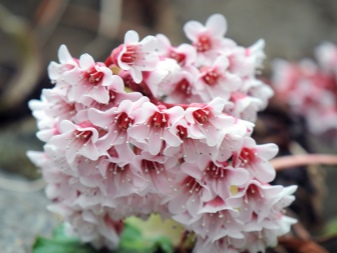
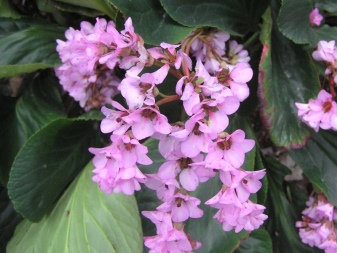
- "Baby Doll"... A popular variety up to 40 cm high with light pink inflorescences and rounded leaves.

Optimal disembarkation time
If you want to grow badan in a garden area, carefully consider the timing of planting its seedlings in open ground. Gardeners have different opinions about the best time to plant badan: some are sure that it is most effective to plant seedlings in early summer (without picking), while others claim that flower seedlings will have time to take root in a new place even when planting in late August.
In any case, planting should only be carried out in the presence of strong seedlings with their own roots and healthy leaves. Here, too, much depends on the region where the plant is planted. In Siberia and the Urals, the landing time should be shifted to the warmest days of the year - at the end of August.
If we talk about the planting time of the badan seeds themselves, then everything here depends on the varietal culture. Most often, sowing is carried out at the beginning of winter or at the end of autumn.
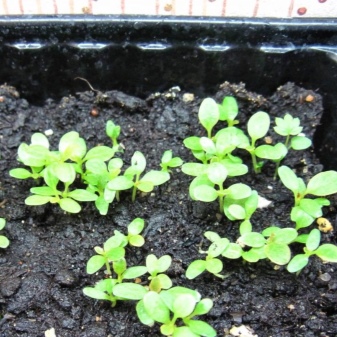
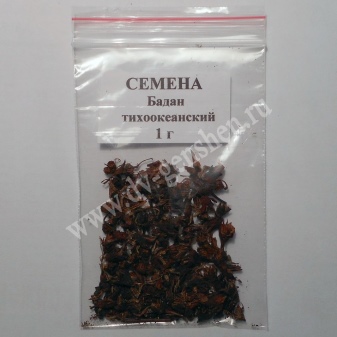
How to plant?
Planting badan seedlings in open ground should not cause difficulties for experienced gardeners, however, there are subtleties and important points that need to be paid attention to.
- It is allowed to plant badan both in shaded areas and in open places - it all depends on the preferences of the garden crop variety. If you are going to grow perennial incense in the garden, then it is best to select places in partial shade, where sunlight will hit the flower in the morning and evening. This plant should not be planted completely in the shade either - this will lead to a decrease in the number of buds and even to a lack of flowering. In too open areas on the north side of the garden, it is also not recommended to plant badan - in this case, the plant will differ in lush flowering, but it will not acquire healthy and strong leaves.
- When choosing a place for planting badan, be guided by areas where moisture does not stagnate after rain - lowlands or swampy areas are not suitable here.
- Regarding the type of soil, badan feels best in neutral or slightly alkaline soil with good air and water permeability.
- So that moisture does not stagnate in the roots of badan, a drainage layer up to 5 cm in thickness is organized in shallow holes. Broken brick, expanded clay, pebbles or ordinary river sand can act as drainage.
- Plants are planted in the holes by transferring - together with the mother's clod. All the holes formed between the roots are covered with a prepared substrate of sand, crushed stone and turf in a ratio of 2: 2: 1. If incense is planted on loam, it is necessary to add crushed stone or ordinary sand to the soil so that it becomes lighter and more airy.
- The ground in the near-trunk circle near the berry seedlings is first tamped, watered abundantly, then loosened from above, at the request of the gardener, a layer of mulch is placed to retain moisture and prevent the growth of weeds.
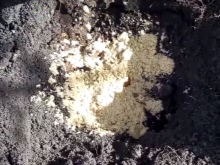

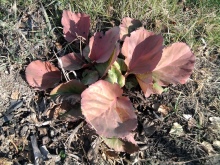
How to take care of it properly?
To grow a healthy bergenia with beautiful and bright inflorescences, it is not enough to properly plant - a lot depends on the subsequent care of this garden crop in the flowerbed.
Watering
Juicy berry leaves allow this plant to effectively conserve moisture and withstand even the driest periods with temperatures up to 30 degrees.
When watering badan, the main thing is moderation in the regularity of moisture supply. This plant does not tolerate an excess of water in the roots, but overdried soil in the near-stem circle is contraindicated for it.
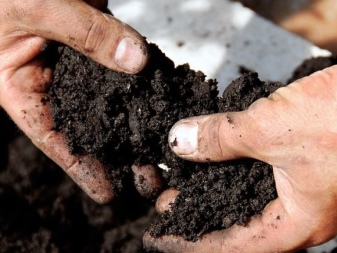
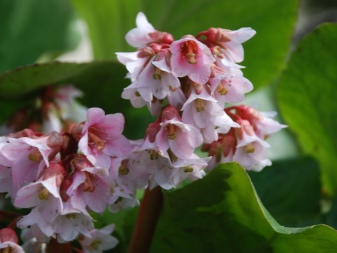
Watering itself is carried out in the evening or morning, when there is no direct sunlight. During watering, the lowest leaf plates of the plant should not be removed - the berry needs them to retain moisture. To water one adult berry bush, you will need at least a bucket of settled water in summer temperature. Avoid watering with a watering can - moisture should not get into the plant's outlets.
The regularity of watering also depends on the place of planting and on the external climatic conditions. If incense is planted on the north side of the garden in an open area, then watering will need to be carried out at least once every 2 weeks. Watering is also carried out during the period of active growth and formation of inflorescences, then - during flowering and again after its end.
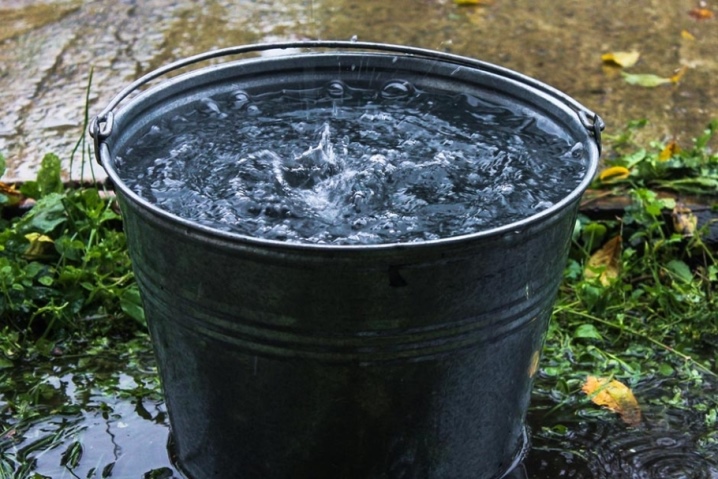
Top dressing
Most gardeners prefer not to feed berry - with an excess of nutrients in the soil, berry begins to grow in leafy plates, but the abundance of flowering decreases.
If badan grows on depleted soils with a low content of vitamins and nutrients, it is advised to feed it no more than 2 times a year. The very first feeding is always carried out in early spring - even before the plant is trimmed and before the period of active growth. The second top dressing is applied to the soil in the fall (after the blooming of the berry and during the formation of leaf rosettes) in order to facilitate the wintering of the plant. In both cases, top dressing should include complex mineral fertilizers in liquid form.
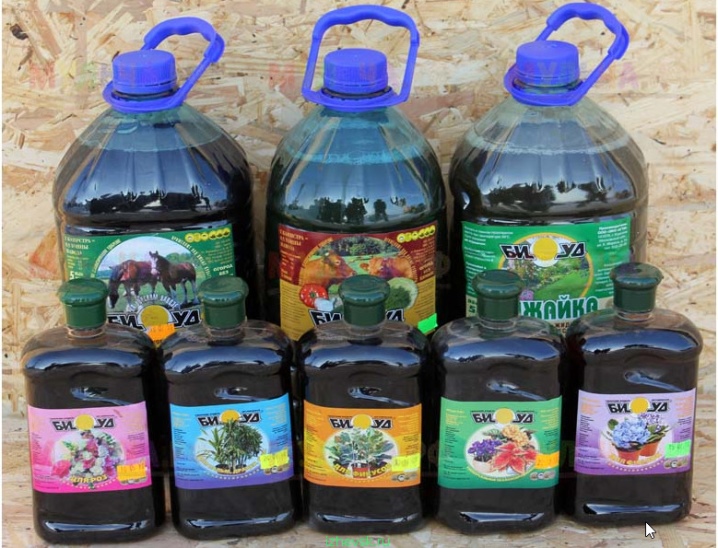
Organic fertilizers are not applied directly to the soil to the badan. Peat, straw, tree bark or compost are used only as a layer of mulch, which retains moisture at the surface of the ground and provides passive feeding.
When choosing the dosage of top dressing, you should always follow the manufacturer's recommendations on the packaging elements of the fertilizer. If we talk about superphosphate and potash fertilizers, then usually it is recommended to take no more than 20 grams of fertilizer per 1 square meter of soil (taking into account its dilution in 10 liters of water).
It is worth giving up nitrogen fertilizing - they will lead to the formation of a huge number of leaf plates and reduce the number of buds.
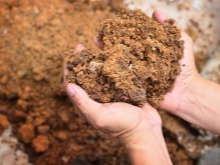


Transfer
Badan is one of those garden crops that cannot tolerate seasonal transplants. This plant can successfully grow in one permanent place for more than 8-10 years, but when planted on a new site, it usually does not take root and rots.
But nonetheless, sometimes it becomes necessary to transplant a plant... Badan is best transplanted to another place only when this culture grows in a flower bed. This horticultural crop has a high growth rate and over time can occupy an entire flower bed, interfering with the growth of other plants. In order to plant young berry bushes in a new place as painlessly as possible, it is recommended to wait at least 4-5 years from the moment the mother plant is planted in open ground.
In order to prevent the growth of badan in the flower bed, it can be limited with stones or a border.
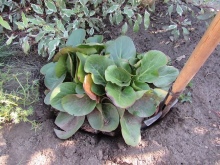
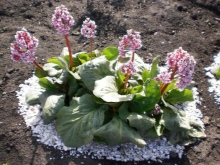
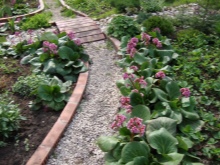
Wintering
Most of the varieties of garden badan are frost-resistant and can withstand even critical temperatures up to -40 degrees. The only condition for the wintering of such a plant is the presence of a shelter in the form of a sufficiently thick layer of snow.
In regions with little snow, but severe winters, the planted badan will need additional shelter - the roots of this plant are usually located close to the surface, which can freeze.
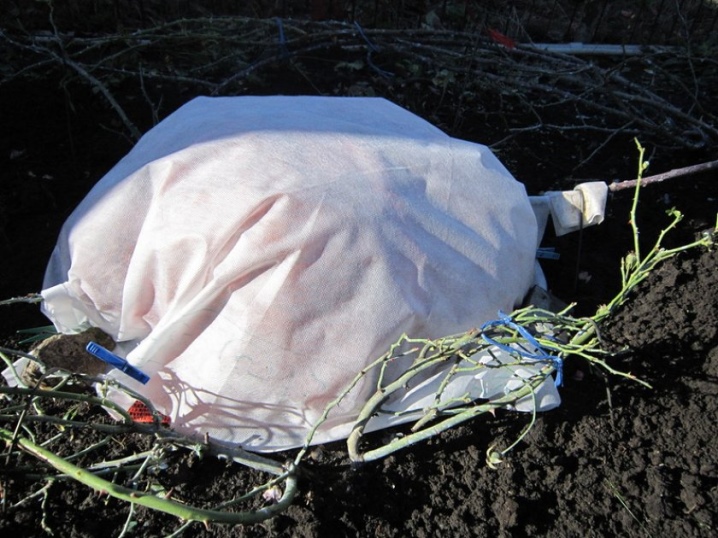
For high-quality shelter, ordinary dry foliage or straw may be suitable. From above, the cut bushes of bergenia are covered with spruce branches, which will protect the plant from the cold wind and freezing.
During the preparation of bergenia for wintering, the stems and buds of the plant are cut shortly, and the soil near the plant is loosened to destroy the larvae of pests that have taken refuge for the winter.
The shelter is removed with the onset of the first warm days.
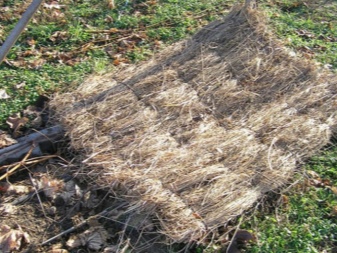
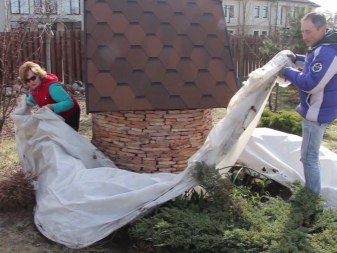
Reproduction methods
Garden incense can be propagated in two ways - through growing seeds and by dividing the bush.
Most often, gardeners resort to the method of dividing the bush, since it takes little time and allows you to plant quite mature bushes with their own root system in a permanent place.
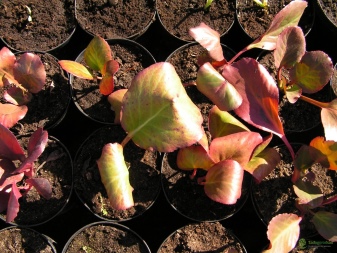

Seed reproduction
Growing badan from seeds is considered a less common option. as it requires taking care of the seedlings of the plant from the very moment of planting the seeds in the ground.
- Planting berry seeds in a container is usually carried out in late autumn or winter.
- A thin layer of expanded clay is placed at the bottom of the box to drain moisture, while the container itself must be with drainage holes. Prepared fertile soil is placed in the container, in which shallow grooves up to 0.5 cm in depth are formed; a distance of at least 3 cm must be observed between the grooves.
- The grooves are watered abundantly with water, after which up to 5-7 seeds are placed in one groove. From above, the seeds are sprinkled with a small layer of earth.
- A box or container with planted seeds is buried in the garden and covered with a layer of snow. In the first days of May, the container is dug up and placed in a shaded room with a temperature of at least 18 degrees.
- The very first shoots should appear about 2.5-3 weeks after placing the container at home. Before 2-3 full-fledged leaves appear at the shoots, watering is carried out as the earthen crust dries in the container. All underdeveloped or excess seedlings should be removed immediately.
- It is advised to regularly loosen the soil with seedlings so that moisture and oxygen can freely flow to the developing roots of the seedlings.
- The picking of berry seedlings is usually carried out not earlier than the appearance of 5 healthy and developed leaves in the seedlings - usually this falls in mid or early May. Best of all, large containers are suitable for picking, where plants are planted at a distance of at least 5-7 cm from each other.
- Before planting in open ground and in a permanent place, seedlings should be subjected to regular hardening. To do this, a container with seedlings (2 weeks before disembarkation) is regularly taken out to the loggia or veranda, where it stays every day for a longer period.
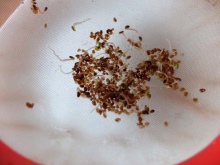
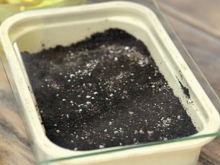
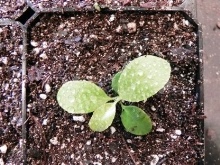
Reproduction by dividing the bush
In adult berry bushes, over time, a huge number of young rosettes with their own roots are formed, which can serve as excellent planting material. This method of reproduction does not harm the root system of the mother bush and allows you to get already strong berry seedlings.
Only healthy and developed berry bushes older than 3-4 years are suitable for dividing the bush. The division of the bush is usually carried out in the spring, even before the period of active growth, or in the fall, after the flowering period. In the near-stem circle near the berry, many additional shoots are formed with their own leaf plates and roots - they should be separated from the mother bush by hand or with the help of a pruner.
Each such seedling must have at least 3 buds, as well as a healthy heel.
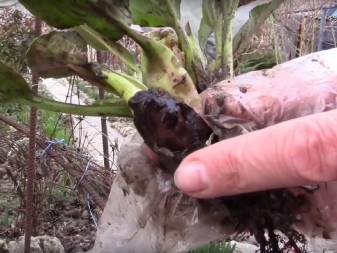
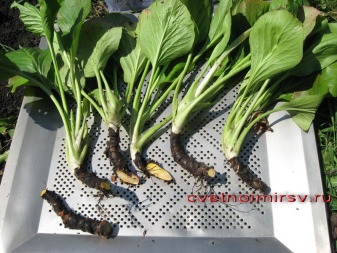
The shoots with roots obtained by dividing the bush are planted in separate holes no more than 7 cm deep; when planting, a distance between plants of at least 30 cm should be observed. Over time, berry grows very much, and therefore can interfere with the growth of nearby plants or other bushes.
Plants planted in this way will take root over the next month and will need regular watering. During the first year of flowering, you should not expect from such seedlings - in the first season, the badan will actively form leaf plates and gain strength for flowering next year. Some varieties of this horticultural culture bloom only in the third year after planting the cut in open ground.

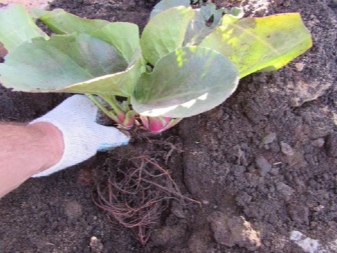
Diseases and pests
Badan is distinguished not only by excellent frost resistance, but also by resistance to fungal diseases and most garden pests. In rare cases, if the key conditions for growing this flower are not followed, the plant will be affected by some ailments.
- Ramulariasis. Fungal disease, the signs of which are the appearance of characteristic brown or brown spots with a red border on the leaf plates. The spots grow very quickly and spread to the rest of the leaves, as well as to neighboring plants. Affected leaf plates lose color, turn yellow and dry out. The cause of the development of the disease is an increased level of humidity or lack of ventilation. The most effective method of treatment is the removal of all affected leaf plates and further treatment of the berry bush with a solution of an antifungal fungicide - Fundazol or any copper-containing preparations like Bordeaux mixture and copper sulfate are best suited for badan.
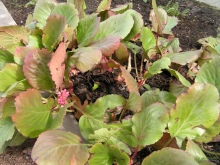
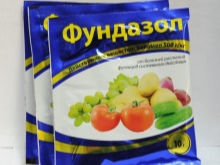
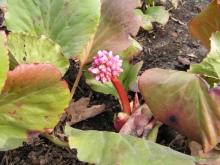
- Pests. The most dangerous pests for badan are nematodes and pennies - they usually appear on flowers that grow in shaded areas of the garden. Nematodes settle on the root system of badan and literally suck out all the vital juices of the flower. It will not work to get rid of pennits by hand, and therefore it is advised to treat the berry bush at least twice with Aktara or Aktellik solutions (with breaks a week). It will be even more difficult to cure a plant from nematodes - for this, the berry is completely dug out of the ground and placed in a concentrated solution of potassium manganese for half an hour. After that, the bush is planted in a new place with disinfected soil.
The old flower bed should be treated with insecticides - nothing should be grown in this place for the next year.


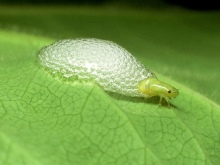
It is very important to notice the pests or fungus on the berry flowers in time in order to ensure high-quality treatment at the very first stages. For this the culture should be regularly inspected (usually during watering) and occasionally sprayed with fungicides as a preventive measure... Already weakened bergenia with infection of all main shoots is easiest to dig up and burn.
The very process of treating a plant with fungicides or insecticides is best done in cloudy and warm weather.
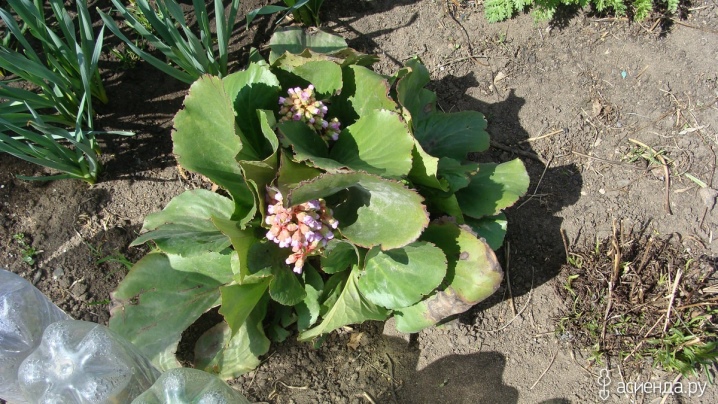
Use in landscape design
I must say that garden badan has been grown by people for decorative purposes for more than two centuries, and therefore this plant is actively used today in the landscape design of country houses and garden plots. Badan is grown individually in a flower bed, where it usually serves as a backdrop for brighter plants, or can form whole flower borders from plants of different varieties.
Such popularity of badan in garden plots is explained by the long flowering period of this culture (from the earliest spring to the first frost), bright and rich inflorescences, as well as the dark green color of the leaf plates.
In the summer, during the flowering period, badan goes well with crops such as iris, daylily, phlox, asters, bells, alissums or Gaillardia.
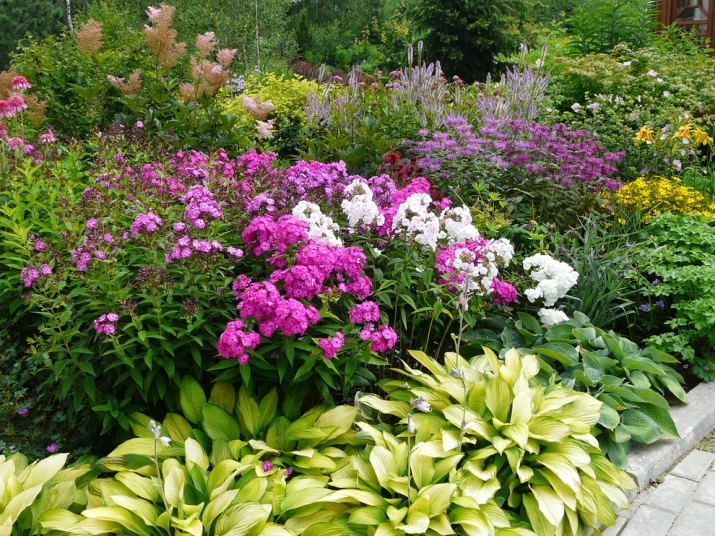
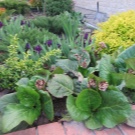
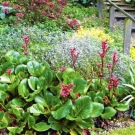

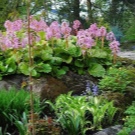
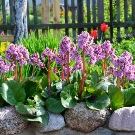
When most of the garden plants have already ceased to bloom in September, the badan continues to decorate the flower beds with its juicy and large leaf plates. Badan leaves are able to maintain a healthy appearance until the very cold. In some varieties of this plant, the leaf plates turn red or turn brown with a gradual decrease in temperature, which makes the berry bushes a beautiful compositional center of the garden.
Sometimes this plant becomes part of the landscape, adjusted to the natural environment: rock gardens or rocky gardens.

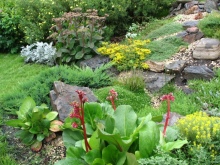
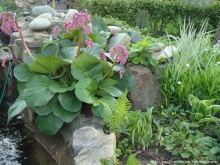
Badan is often planted near decorative ponds and reservoirs - its dark green leaves will give the water an emerald hue.
If we talk about the compatibility of badan leaves with garden plants, then here it will look best with ferns or conifers - thuja, juniper. Garden crops with narrow and cut leaves look especially interesting against the background of badan.
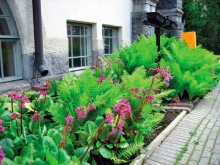
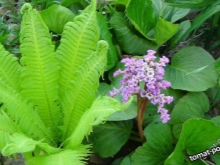
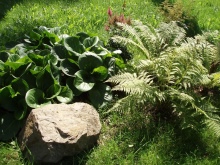
See below for the features of growing badan.







































































































The comment was sent successfully.